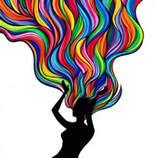
OMG!
No, wait! I mentally ask myself, as does most of the audience, "What's a Synesthete?" While the woman explains that she hears colors … wham! A story idea is born.
Writers are always on the alert for different situations, and this one has plenty of potential as an intriguing setup for a novel. Author Judy Reeves says that the job of the writer is to observe the details of everyday life and record them for the world. A big part of that is paying attention to how these details are perceived. But what if…?
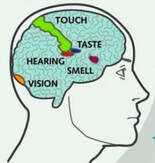
Synesthesia (or synaesthesia), which comes from ancient Greek words meaning "together" and "sensation", is a neurological condition in which stimulation of one sensory pathway leads to automatic, involuntary experiences in a second sensory or cognitive pathway. It occurs because of increased communication between sensory regions of the brain and is involuntary, automatic, and stable over time.
In other words, synesthetes are people who's brains link two or more of the five senses i.e. see a sound or smell, hear or taste a color, and so on. It is a consistent perception of reality to that person.
And while it may be called a neurological condition, the term "neurological" only refers to the brain as the basis of the perceptual difference. It's not a medical condition and rarely interferes with normal daily functioning. It is what it is -- like being color blind. That's just the way those individuals perceive things, and it takes synesthetes a while to learn that not everyone perceives the world in the same manner.
While most synesthetes discover as children that they perceive things differently, it is generally reported to be a neutral or pleasant experience. Most don't consider it a handicap, but a gift or "sixth sense." However, some fear ridicule for their unusual perception, and may end up living in isolation and alone in their experiences. I see the potential for considerable miscommunication in school, too.
Scientists have identified nineteen different types of synesthesia, but many of them are quite rare. Two or more of any of the five senses can be linked, but several types are more common.

In this most common form of synesthesia, individual letters, numbers, or days of the week are perceived as having colors. While not all individuals see the same color for the same letter or number, there are some commonalities. Several sources indicated that the letter A is mostly likely to been seen as red; the letter O, white or black; S is usually yellow.
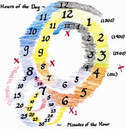
Spatial sequence synesthesia consists of visualizing certain sequences in physical space. The synesthete perceives the months, dates, numbers, letters or other elements in a sequence in the physical space around them or in front of them. Apart from spatial position, these elements may also have their own color, texture and shape.
People with this form of synesthesia see numerical sequences as points in space. For example, the number 1 may appear as further away and the number 2 closer. Synesthetes with SSS tend to have extraordinary memories and are able to recall past events and memories in greater detail and more accurately.
There are different types, and a particular synesthete may have just one type or several at the same time. The types are:
● Calendar Synesthesia (time-space synesthesia) = most common
● Number form synesthesia
● Letter form (or alphabet form) synesthesia
● Spatial visualisation of other sequences (school subjects, books of the Bible and signs of the zodiac are a few examples) = least common.
Major researchers estimate that 29% of synesthetes have one or more of the first three types, making spatial sequence synesthesia one of the most common types of synesthesia that exist.
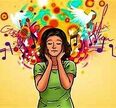
Sometimes called chromesthesia, this is the form where voices, background sounds, music and other auditory stimulus triggers a phenomenon described as fireworks of color which fade when the sound ends. It can be a single sound like a single musical note or a wide variety of sounds that trigger the experience.
The sound can alter the perceived brightness, intensity, directional movement and other aspects of the color display, which is described as seeing it on a screen in front of one's face rather than in the mind's eye.
While the same sound doesn't produce the same results with all synesthetes, loud tones are generally brighter, softer tones paler, and lower tones darker than high ones.
The paintings shown below are by 26-year-old Melissa McCracken. They are what she see when she hears the indicated music.
Source of Images: vice.com/en/article/artist-with-synesthesia
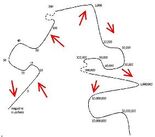
Whenever a synesthete with NFS thinks of numbers, a mental map of numbers appears automatically and involuntarily. Cross activation between regions of the parietal lobe that control numerical recognition and spatial cognition may be the cause.
This one was hard for me to understand.
Image Source: pinterest.com/1579075 The Galton Number Form - Wikipedia

I've always wondered if programmers see numbers differently. I guess some of them do.
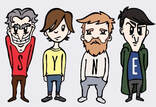
OLP is where ordered sequences such as days, month, letters, or numbers are associated with personality types, such as the Wikipedia example where one individual said, "T's are generally crabbed, ungenerous creatures. U is a soulless sort of thing. 4 is honest, but… 3 I cannot trust." Yikes!

This is rare. Here, individual words and the phonemes of spoken language create a taste sensation in the mouth. To some, three senses are combines, and the tastes have colors.
Well, maybe this one isn't as rare as the researchers think. Doesn't the word chocolate cause the writer's mouth to water with that delicious, comforting taste? I certainly don't get the same reaction with the technical name theobroma cacao.
In some people, words evoke taste of food no longer made or on the market
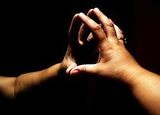
This form is also rare, but when the individual with MTS sees another person being touched, the synesthete feels the touch as well. They can also feel the pain of another when that person is hurt. Perhaps there are real empaths.
A FEW WORDS OF HISTORY
The ancient Greeks philosophers seemed to be aware of the condition when they asked "Is the color (what we now call timbre) of music quantifiable?" Both Isaac Newton and Goethe suggested that musical tones and colors shared frequencies (which, actually, is incorrect but they were getting the idea).
The first medical description of colored hearing was written in 1812 by German Gustav Fechner. His thesis stirred up interest, but testing proved difficult, and the research "faded into science oblivion." Medical interest waned until the cognitive revolution in the 1980s.
In the early studies, the estimated frequency varied widely, as high as 1 in 20 to 1 in 20,000. Since then, with more studies, it is estimated that 1 in 23 individuals has some kind of synesthesia, and 1 in 90 have colored graphemes.
Recent studies show that the condition runs in families, which suggests a genetic origin. There is an almost equal sex ratio, 1.1:1.
It's a complicated subject with links to other areas of study. If you're interest, I've listed several references to start with.
JUST SAYIN' !
□
Sources
https://www.deviantart.com/eychanchan/art/Synesthesia-273485854
https://www.sickchirpse.com/index.php
https://www.pinterest.com/pin/36169603236849219/
https://www.vice.com/en/article/gyxq73/this-artist-with-synesthesia-sees-colours-in-music-and-paints-your-favorite-songs
https://synesthesiaforsynesthetes.weebly.com/spatial-sequence.html
https://www.thesynesthesiatree.com/2021/03/spatial-sequence-synesthesia.html
https://www.pinterest.com/pin/157907530674883939/
http://cornfedinseattle.blogspot.com/2010/04/synesthesia-experimental-type.html
https://www.businessinsider.com/bizarre-brain-disorders-2015-8?utm_content=buffer475f7&utm_medium=social&utm_source=facebook.com&utm_campaign=buffer
http://en.wikipedia.org/wiki/Synesthesia
http://www.livescience.com/169-rare-real-people-feel-taste-hear-color.html
http://www.medicalnewstoday.com/releases/92698.php
http://www.plosbiology.org/article/info:doi/10.1371/journal.pbio.1001205
http://faculty.washington.edu/chudler/syne.html
http://web.mit.edu/synesthesia/www/
http://synesthete.org/
http://www.brainpickings.org/index.php/2011/04/22/how-synesthesia-works/
http://voices.yahoo.com/synaesthesia-rare-condition-causes-people-to-7439522.html?cat=5
http://www.nytimes.com/1999/02/23/science/when-people-see-a-sound-and-hear-a-color.html?pagewanted=all&src=pm
http://www.thejohnsonblog.com/2011/10/28/number-form-synesthesia/http://www.thejohnsonblog.com/2011/10/28/number-form-synesthesia/
http://personalitycafe.com/general-psychology/1606-synesthesia.html
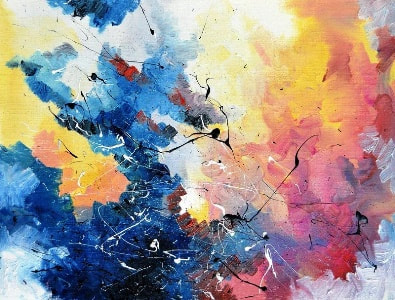
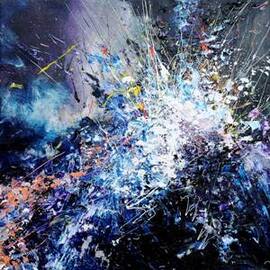
 RSS Feed
RSS Feed